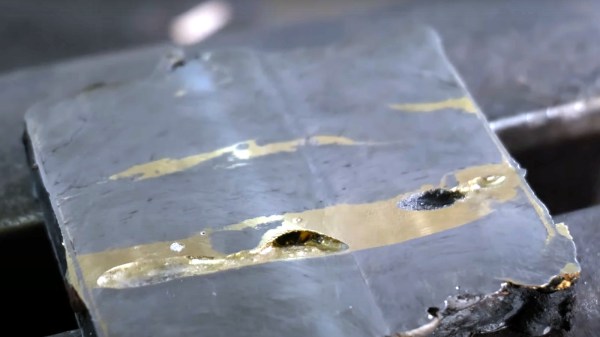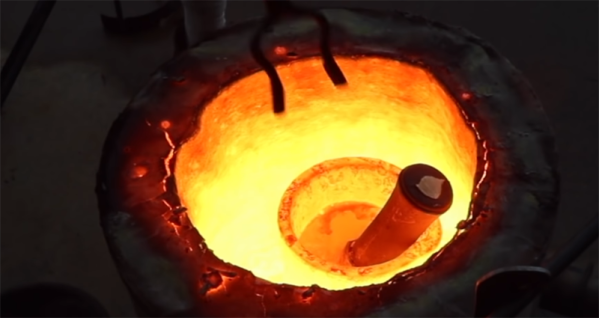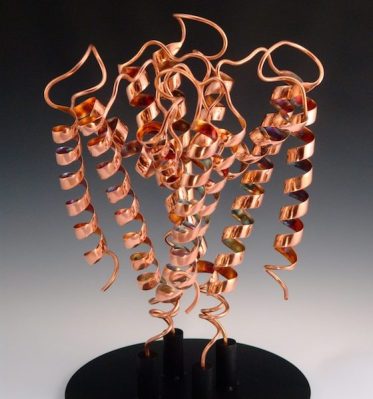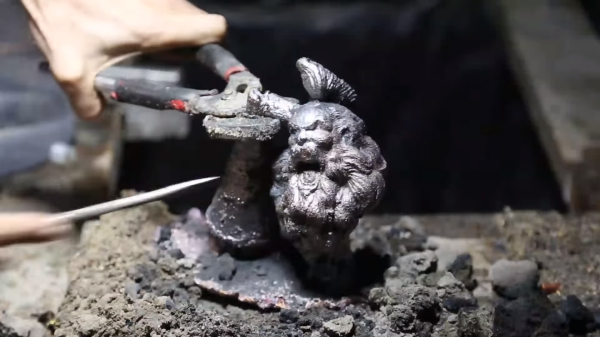[Will Stelter], a promising young blacksmith working out of Montana, had a terrific idea for a unique composite material for finishing off a knife build. This build is a collaboration between multiple blacksmiths, and as the youngster of the group, [Will] really wanted to pull out the stops and finally make a material he’d been contemplating for years to impress the elders. He knows that if you try to forge wrought iron at too low a temperature, it develops cracks and splits. Could you do this on purpose, and then fill these cracks with bronze? It would be quite the stunning material, with the bright bronze veins running through the dark iron. He had to try.
Unfortunately, our young experimenter ran into some problems that didn’t have enough time to overcome. First, getting the bronze to flow and fill the voids of the iron was a challenge, particularly when heating with a torch. Throwing the whole experiment into a forge resulted in the bronze leaking through the enclosure. The most promising attempt was a beefed-up box, set in an oven for about 20 minutes, with the temperature high enough to liquefy the bronze. It was looking great, until he cut into it and found too many air pockets for a workable billet.
The attempt was a failure, but we’re delighted that [Will] went ahead and put the video out there anyway. And if you know how to make this work, go drop a comment on his channel, and we’ll all look forward to a part two, where he finally nails the technique.
Continue reading “Fail Of The Week: Bronze-Brazed Wrought Iron”




 For “Tears”, his sculpture of the enzyme lysozyme shown in the banner image, [Mike] started with crystallographic data that pinpoints every peptide residue in the protein. A model is created for the 3D printer, with careful attention paid to how the finished print can be split apart to allow casting. Clear PLA filament is used for the positive because it burns out of the mold better than colored plastic. The prints are solvent smoothed, sprues and air vents added, and the positive is coated with a plaster mix appropriate for the sculpture medium before the plastic is melted out and the mold is ready for casting.
For “Tears”, his sculpture of the enzyme lysozyme shown in the banner image, [Mike] started with crystallographic data that pinpoints every peptide residue in the protein. A model is created for the 3D printer, with careful attention paid to how the finished print can be split apart to allow casting. Clear PLA filament is used for the positive because it burns out of the mold better than colored plastic. The prints are solvent smoothed, sprues and air vents added, and the positive is coated with a plaster mix appropriate for the sculpture medium before the plastic is melted out and the mold is ready for casting.












